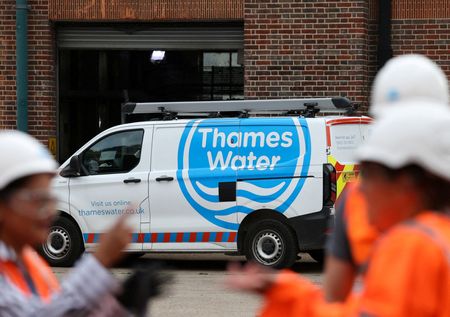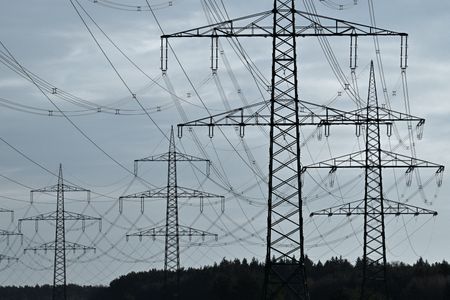By Sarah Young and Paul Sandle
LONDON (Reuters) -Britain is expected to set out measures to fix its broken water sector on Monday as Thames Water teeters on the brink of failure, saying it needs a “reset” of regulation to have any chance of avoiding nationalisation.
The country’s biggest water company has been fighting for its survival for the last 18 months. If it fails the government would have to step in, adding billions of pounds to already stretched public finances.
Britain commissioned a review last year into the privatised water industry in England and Wales, which needs huge investments to fix aging infrastructure and stem sewage spills into rivers and lakes that have angered the public.
Former Bank of England deputy governor Jon Cunliffe, who is leading the review, has recommended overhauling regulation to lower investment risk, merging regulators to give companies clearer direction and new rules on river bathing standards.
“Water companies must be made more attractive to stable, long-term investors,” Cunliffe said in his interim report in June, adding that the sector required more predictable regulation.
Launching the review last October, environment minister Steve Reed said there had been “very severe failures of regulation”, raising the prospect that Ofwat, the water industry’s financial regulator, could be scrapped.
Thames Water’s creditors have offered it a rescue deal worth about 5 billion pounds ($6.7 billion), and they, along with Thames Water, are in talks with Ofwat.
But in return they want a regulatory reset, which could mean flexibility on pollution targets, clemency on penalties and more time to deliver improvements.
Data released on Friday showed the scale of the sewage problem in England, with serious pollution incidents up 60% in 2024 compared to the previous year.
Thames Water was responsible for 44% of the most serious incidents, the Environment Agency said, but all nine companies showed “consistently poor performance”.
Thames Water Chief Executive Chris Weston told lawmakers on Tuesday that the company was “extremely stressed and operating in very difficult circumstances” after it reported a 1.65 billion pound annual loss.
Thames Water suffered a setback in June when U.S. private equity firm KKR – its preferred bidder – pulled out of an earlier rescue plan.
KKR told lawmakers in a letter published on Tuesday that regulatory risk played a part in its decision, and it would not have been “able to manage and meet the understandable expectations on the timing of improvements, risking falling short in the eyes of the public and stakeholders”.
Thames Water, which has 16 million customers in southern England, forecasts it will face 1.4 billion pounds in pollution fines and penalties over the next five years.
While the government wants to cut water pollution, it can ill afford a Thames Water bankruptcy that would add the company’s 17 billion pound debt onto government books, at a time when finance minister Rachel Reeves is already close to breaking her fiscal rules.
The government has repeatedly said it is keeping a close eye on Thames Water. Environment minister Steve Reed said in June that his department had “stepped up” preparations for its special administration regime, a form of temporary nationalisation.
($1 = 0.7466 pounds)
(Reporting by Sarah Young and Paul Sandle; Editing by Joe Bavier, Elaine Hardcastle)










